|
Me Sahyadri |
|
February 2017 |
|
Volume 4, number 2, # 44 |
|
|
Please use minimum 1280 pixel horizontal screen resolution for viewing. Please be patient while all the images in webpage are loaded. Please do not use the images for any commercial use without permission. Text in Marathi and English is not exact translation. Please give sufficient time to allow the photographs to load. Special thanks to all those who helped me during the compilation and for the help and guidance during the activity. |
|
|
|
|
देशाची आर्थिक प्रगती व्हावी असे सर्व नागरिकांना वाटणे सहाजिक आहे. अर्थकारणामुळे मिळणारा रोजगार, समृद्धी यासाठी सर्वांनाच आर्थिक प्रगती हवी हवीशी वाटते. आर्थिक प्रगती होताना, त्याचा दिर्घकाळात समाजावर, निसर्गावर, वातावरणावर दुष्परिणाम होणार नाही याची काळजी घेणे महत्वाचे आहे. मनुष्याच्या भावी पिढ्यांना पाणी, शुद्ध हवा, योग्य वातावरण मिळत रहावे अशी भावना मनात रुजणे महत्वाचे आहे. वाढत्या आर्थिक प्रगतीमुळे नैसर्गिक संपदेवर ताण येतो. प्रगतीसाठी प्रदुषण होते. जंगले, माळराने, व इतर अधिवास नष्ट होतात. वसुंधरेवर रहाणाऱ्या इतर जीवांचा मात्र मनुष्य फारसा विचार करत नाही. आर्थिक प्रगती करताना, मनुष्य निसर्गाची हानी करत आहे. मुळताच माणसाला निसर्गाचे महत्व समजणे हे सध्याच्या आपल्या प्रगत जीवनशैली मुळे अवघड झाले आहे. आर्थिक प्रगती, समाजाची प्रगती व निसर्ग संपदेची निगा, यांचा समतोल राखणे काळाची गरज आहे.
सह्याद्री (पश्चिम घाट) हा एक नैसर्गिक संपदेचा, वैविध्यतेचा, भौगोलिक व ऐतिहासिक ठेवा आहे. वाढत्या मानवी अतिक्रमणाचा, सह्याद्रीच्या विविध घटकांवर होणारा दुष्परिणाम भविष्यात आपल्यालाच धोका निर्माण करेल, यात शंका नाही. शुद्ध पाणी, हवा व उर्जा, भावी पिढीला मिळण्यासाठी, नंद्यांचे उगम असलेला सह्याद्री व त्याभागातील जंगले टिकवणे महत्वाचे आहे. सह्याद्रीच्या महत्वाच्या घटकांचे महत्व छायाचित्रांद्वारे प्रकट करण्याचा मी येथे प्रयत्न केला आहे. येथील पक्षी, प्राणी, वनस्पती, अधिवास, किल्ले व लेणी अशा विविध विषयांबद्दल आपण समजुन घेऊ.
|
|
As the economic development has taken the center stage, the balance between the environmental sustenance and socio economic development will be under the scanner. As most experts with balanced views have proclaimed, Indian wildlife and ecological system sustenance will be under threat, unless precautions are taken with the help of appropriate research and long term national interests. As we encounter the economic development, many habitats which indirectly or directly help sustainable development will be damaged. The awareness to gauge the success by sustainable development and not by year to year growth is a distant dream any environmentalist will assume in current scenario.
Western ghats, or Sahyadri as we all call it as, is a treasure trove of spectacular landscapes, biodiversity, flora, fauna, some amazing geological wonders and man made monuments. With the increasing pressure from human encroachment, all these elements are under stress and in turn are under depletion. Western ghats should be left untouched by human beings, to protect their future generations from getting short of resources, such as water, energy and clean air. The important elements of western ghats, which need protection are highlighted in the new version of Photo journal, Me Sahyadri Magazine. The current issue has few of the flora from the north Western Ghats.
|
|
|
| |
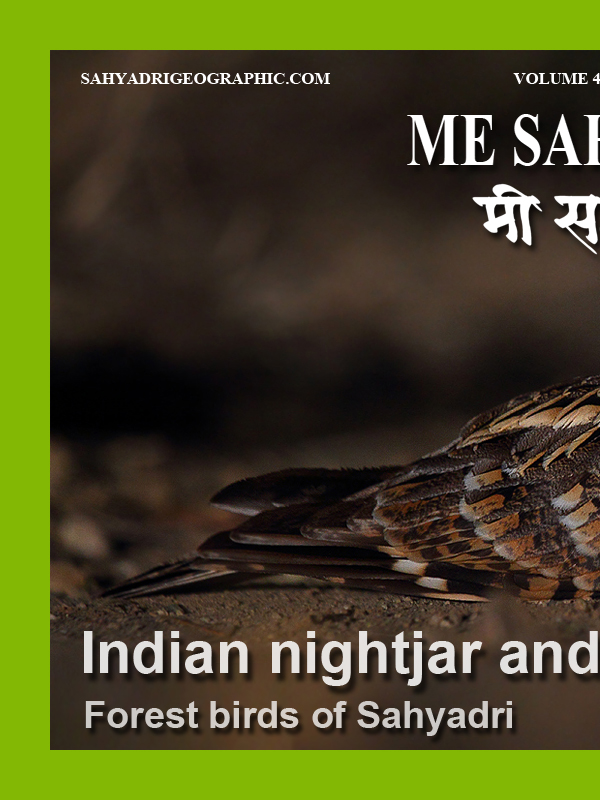 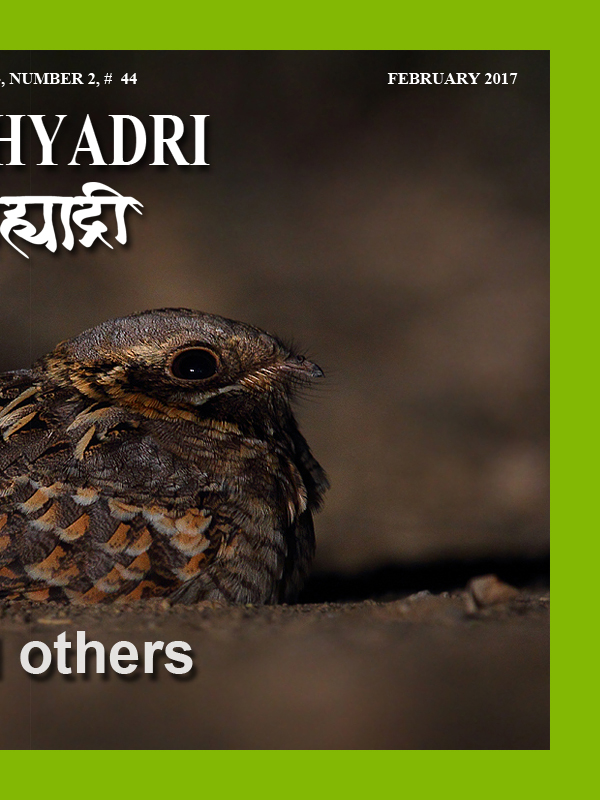
|
| |
| Me Sahyadri – February 2017
|
| |
|
|
| |
  |
| The banner has been published here to improve the awareness of the trekkers and tourists visiting the various mountain forts, mountains in north western ghats. Please avoid accidents, by following good outdoor ethics such as no swimming in cisterns at mountain forts, no rock climbing without proper technical equipment and expertise. Please do not adventure, trek with any group or individually without understanding the risks associated. The frequency of the solo trekker fatalities have increased recently. Please strictly avoid solo treks. Please also avoid treks to mountains in large commercial groups, as it leads to damage to biodiversity of these high elevation ecological islands. Please respect the wildlife and biodiversity of the region. This has become more important as the ever increasing human interference is leading to severe damage to fragile ecosystems. Please be aware of the wildlife and biodiversity of the mountains before visiting these mountains. Please follow outdoor ethics. Follow ASI and Forest department rules. The concept of use of symbols for outdoor ethics was conceived and designed by "Sahyadri Trekker Bloggers Group". |
| |
|
|
| |
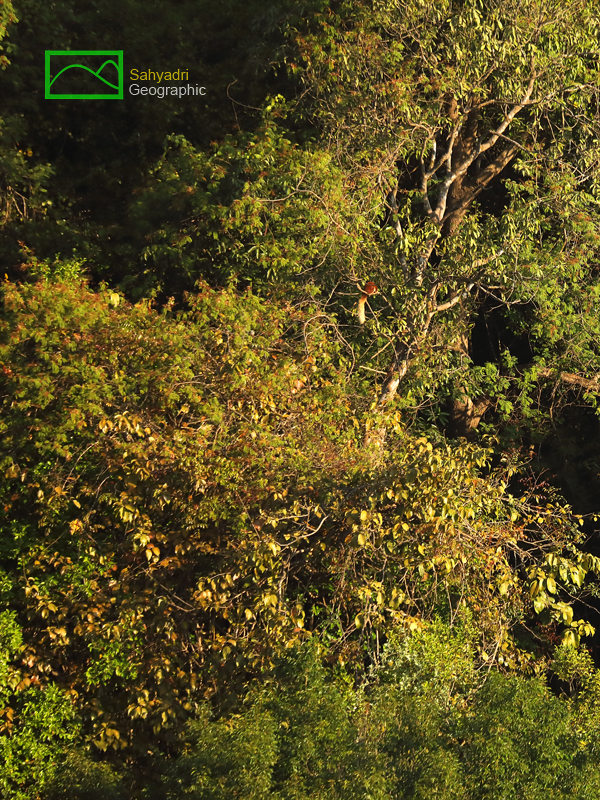 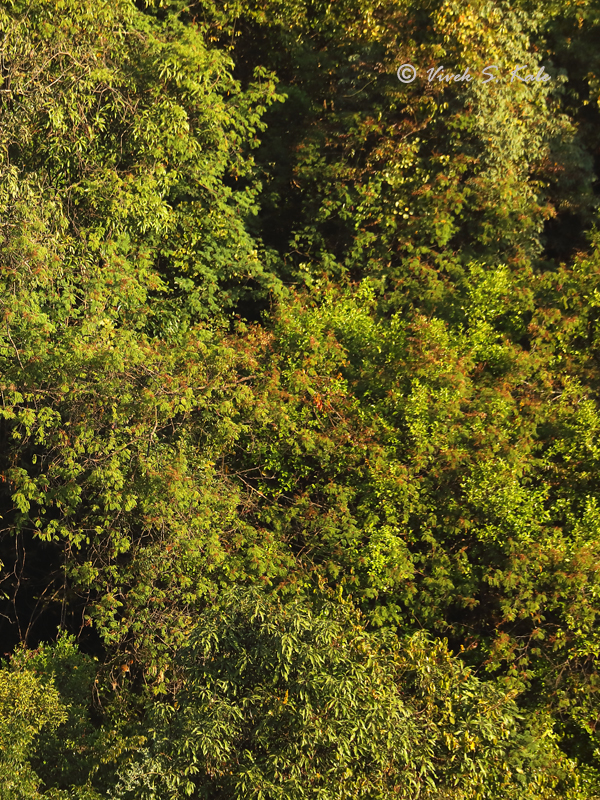 |
| Evergreen forest, Maharashtra, Western ghats, India |
| |
|
|
उत्तर सह्याद्री चे चार विभागांमध्ये वर्गीकरण करता येइल. पहिल्या भागात, पश्चिमेकडे कोकणात लहान टेकड़्यच्या आजुबाजुस असलेले जंगल मुख्यत: सदाहरित आणी पानगळीचे आहे. दुसऱ्या भागात घाटमाथ्यावर, सदाहरित जंगल आहे. तिसऱ्या भागात घाटावर पण घाट्माथ्यापासुन देशावरच्या आतल्या भागात पानगळीचे जंगल आहे. चौथ्या देशावरच्या पर्जन्यछायेच्या भागात, कोरडे खडकाळ माळरान वने आहेत. या चित्रनिबंधात आपण सदाहरित जंगलातील काही पक्ष्यांचा आढावा घेत आहोत. घाटमाथ्यावरच्या दक्खन च्या पठारावरचे जंगल सदाहरित आहे आणी येथे जैवविविधता विपुल आहे. सदाहरित जंगलाच्या चिंचोळ्या पट्टीत पक्षी जीवन समॄद्ध आहे. वर नमुद केलेल्या भागांत अंदाजे ४०० + पक्ष्यांच्या जाती आढळतात. सदाहरित व पानगळीच्या जंगल भागात अंदाजे २००+ पक्ष्यांच्या जाती आढळतात. यातील २० जाती अंतर्जन्य आहेत. अंतर्जन्य म्हणजे, अश्या जाती ज्या या भागाव्यतिरिक्त इतरत्र आढळत नाहीत. यातील काही पक्षी सह्याद्रिच्या उत्तर भागात (गुजरात, महाराष्ट्र) येथे आढळतात.
|
|
North western ghats can be divided in to four zones. The western most zone is the Konkan region just below the western ghat ridge. The region has mix of evergreen and semidecidous forests. The second region is along the ridge at higher elevation and at the edge of Deccan plateau, called as ghatmatha, which has evergreen forest. The third region is on and around the hills on Deccan platau east of the ridge. This region mainly has semidecidoius forest. The fourth region is rain shadow region hills further east which has dry and arid habitat with grasslands. In this photoessay some of the birds from the first three forest regions are described. The evergreen forests atop the edge on Deccan plateau are rich in its biodiversity. The narrow band of this habitat all along the Western Ghats has some amazing forest birds. About 400+ species are seen in and around the four zones described above. The forest birds in particular are restricted to very narrow band of the region. Out of about 200+ birds seen in evergreen and semidecidous forests, in Western Ghats, there are about 20 endemic species. In northen section of Western Ghats some of these endemic species can be seen.
|
|
|
| |
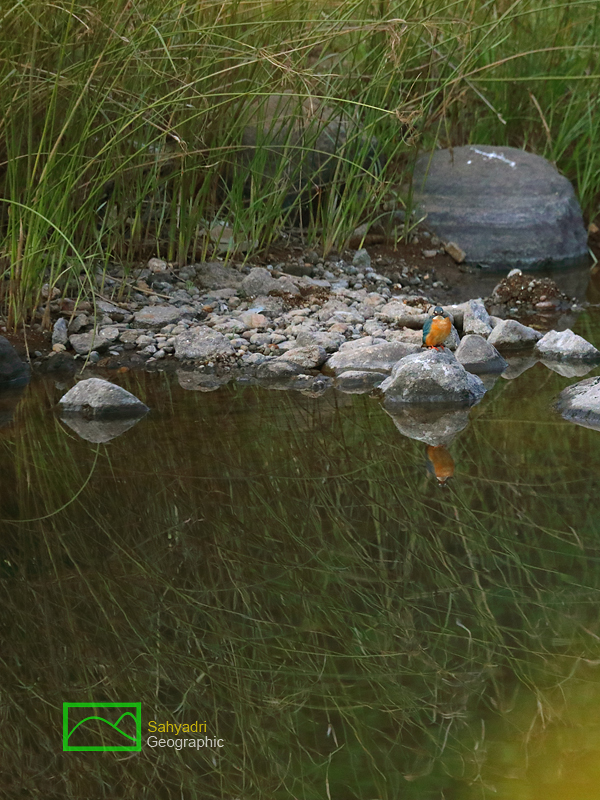 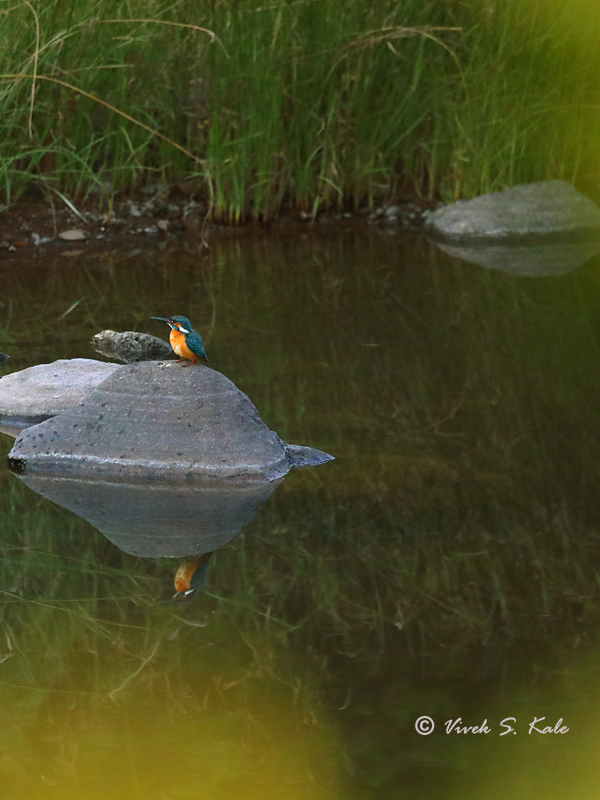 |
| Stream in evergreen forest, Maharashtra, Western ghats, India |
| |
|
|
सह्याद्रीच्या जंगलात आढळणाऱ्या पक्ष्यांचे वर्गिकरण विविध पद्धतीने करता येइल. स्थानिक, जवळपास स्थलांतर करणारे, दुर पल्याचे स्थलांतर करणारे असे एक वर्गिकरण करता येते. सह्याद्रीच्या जंगलात आढळणारे काही पक्षी हिमालयाच्या जंगलातुन स्थलांतर करुन येथे येतात. स्थानिक पक्षी ऋतुमानाप्रमाणे जवळपास स्थलांतर करतात अथवा एकाच ठिकाणी थांबतात. यात काही पक्षी अंतर्जन्य आहेत. सह्याद्रीतले अंतर्जन्य पक्षी म्हणजे जे सह्याद्रीच्या बाहेर आढळत नाहीत असे पक्षी होत. सह्याद्रीच्या उत्तर भागात (महाराष्ट्र, गुजरात) येथे पर्जन्यमान कमी आहे. दक्षिणेकडे (गोवा, कर्नाटक, तमिळनाडु, केरळ) येथे पर्जन्यमान जास्त आहे. दक्षिणेकडील जंगले पर्जन्य वने आहेत. दक्षिण अमेरिका, दक्षिण पूर्व आशिया येथील पर्जन्यावनात आढळणाऱ्या पक्ष्यांच्या जैवविविधतेच्या तुलनेने आपल्या सह्याद्रीत आढ्ळणाऱ्या पक्ष्यांच्या वैविध्यतेत तुट असली तरी सह्याद्रीच्या अंतर्जन्य पक्ष्यांच्या जातींमुळे येथील पक्ष्यांचे व त्यांच्या अधिवासाचे महत्व कमी लेखता येणार नाही.
|
|
The forest birds in western ghats can be classified as resident, local migrants and migratory. Many forest birds migrate from forests around Himalaya to forests in western ghats and rest of India. The birds can also be classified as endemic and non endemic. The endemic birds are the ones which can be found only in region, western ghats in this case. The non endemic birds are the ones which are the ones which are seen not exclusively only in western ghats. Though the variety of birds seen in western ghats is not as high as in tropical forests in south America and elsewhere in south east Asia, western ghats has wide range of forest bird species.
|
|
|
| |
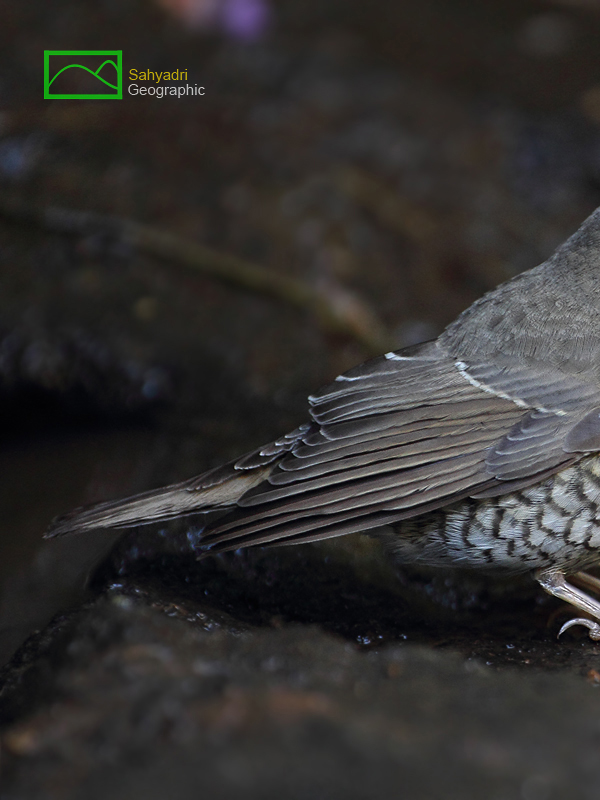 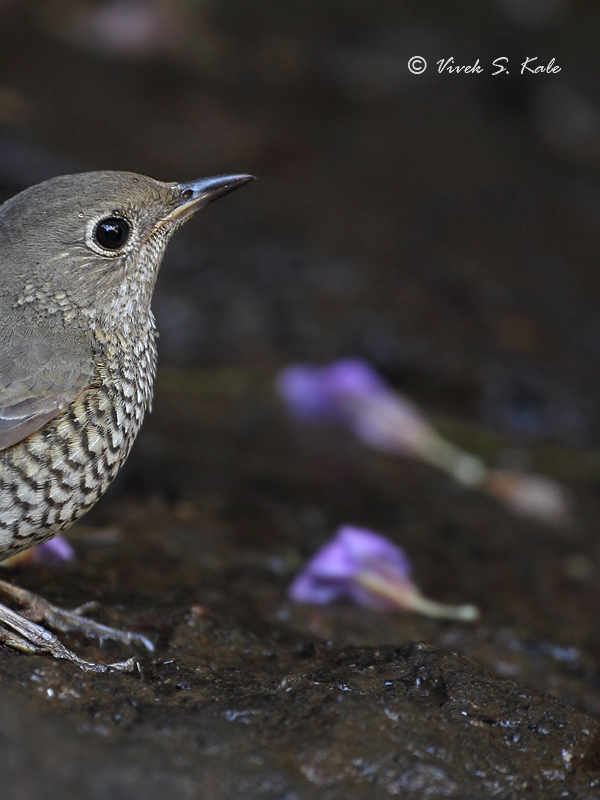 |
| 3. Blue capped rock thrush female, western ghats, Maharashtra, India |
| |
|
|
ब्लु कॅप्ड रॉक थ्रश हा लहान हिमालयन पक्षी, हिवाळ्यात सह्याद्रीच्या व पुर्व भारतातील जंगलांमध्ये स्थलांतर करुन येतो. हा पक्षी रंगाने केशरी व निळा असतो. याचा आकार बुलबुल पक्ष्याएवढा असतो.
या पक्ष्याला मराठीत प्रचलित नाव नसले तरी आपण त्याला निळ्या टोपीचा कस्तुर असे म्हणु शकतो. हा पक्षी अंदाजे १७ से. मी. आकाराचा असतो. नर आणी मादी पक्षी रंगरुपाने वेगवेगळे दिसतात. अश्या प्रकारास इंग्रजीत सेक्शुअल डाउमोर्फिजम असे म्हणतात.
मादी पक्षी रंगाने ओलिव्ह करडा असतो. तीच्या पोटावर गडद तपकिरी करड़्या खुणा असतात. तीच्या पाठीकडे व माथ्यावर गडद तपकिरी करड़्या खुणा असतात. अगदी लहान पिल्ले सुद्धा मादीसारखी दिसतात.
|
|
Scientific name of Blue-capped rock thrush is Monticola cinclorhynchus. It is also called as blue headed rock thrush. This is a small Himalayan thrush bird. It has cobalt blue and orange plumage. Its size is close to that of bulbul.
The bird is about 17 cm in size (length from its beak to tail). The sexual dimorphism can be seen in this bird species. Sexual dimorphism is the difference in appearance between males and females of the same species, such as in colour, shape, size, and structure.
The female bird is olive brown. The female has olive brown upperparts which are barred with dark brown and whitish underparts which are scaledamd barred with brown.The female has buff baring on uppertail coverts Juvenile birds resemble female. Male juvenile bird has white wing bars.
|
|
|
| |
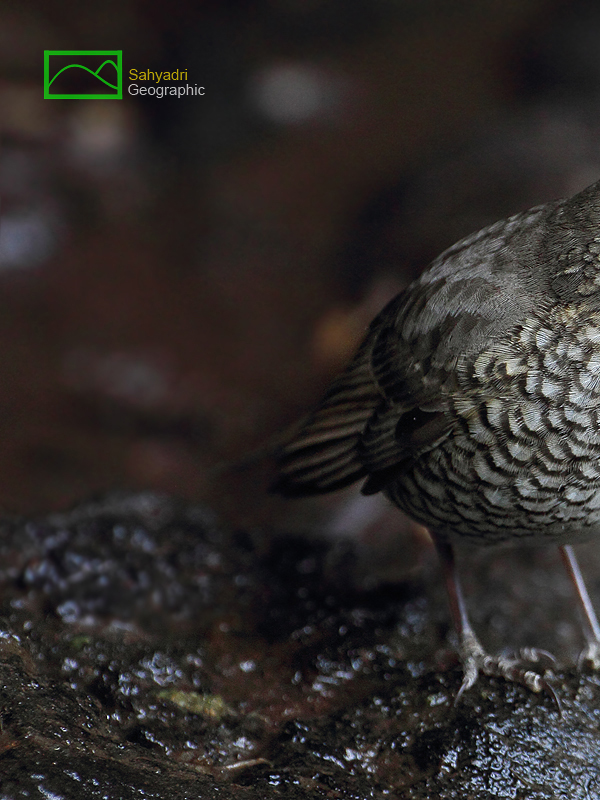 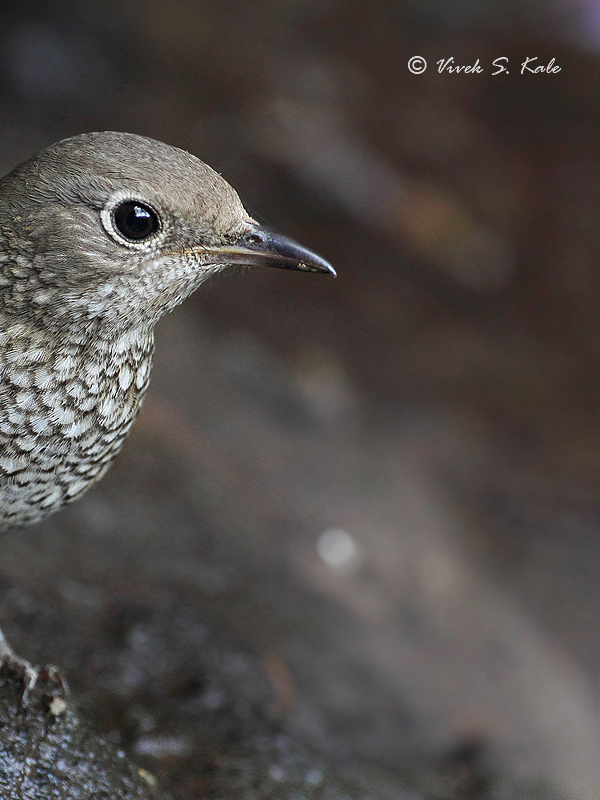  |
| 4.
Blue capped rock thrush female, western ghats, Maharashtra, India |
| |
|
|
नर पक्षी रंगाने निळा आणी केशरी असतो. त्याचा माथा, गळा व मान निळ्या रंगाची असते. त्याच्या पाठीकडचा भाग आणी पोटाकडचा भाग केशरी असतो. त्याच्या पिसांचा भाग निळा, केशरी, सफेद आणी काळा असतो. त्याचे डोळे तपकिरी असतात. पाय पांढरट करडे असतात. त्याची शेपुट निळी असते. त्याची चोच काळी असुन त्याचा काही भाग पिवळट असतो
निळ्या टोपीचा कस्तुर हिवाळ्यात सह्याद्रीच्या जंगलात आढळतो. तसेच तो मध्य व पुर्व घाटातील जंगलात सुद्ध आढळतो.
|
|
The male bird has cobalt blue crown, chin, nape and throat. The upper parts are cobalt blue and black. rump, upper tail-coverts, whole lower surface, axillaries and under wing-coverts are orange.Lesser wing coverts are bright cobalt blue. The upper tail coverts are orange in color. Lores, cheeks, ear-coverts, sides of neck, back and scapulars are black in color. The greater wing-coverts are black edged with blue.
The primaries are black, all except the first two edged with blue. The secondaries are black, all except the innermost with a broad white band on the base of the outer webs . This white patch on the wing that is visible during flight. The tail is blackish edged narrowly with blue .Iris is dark brown. The gape is yellow and In the non-breeding season the base o£ the lower mandible is also yellowish .
There is are no further subspecies of blue capped rock thrush, Monticola cinclorhynchus. This bird breeds in the foothills of the Himalayas (1000 meter to 3000 meter altitude). In winter it is found in Pakistan, some parts of Myanmar and India. In India the bird is seen in winter in western ghat, Asam hills and central east forests from October to April.
|
|
|
| |
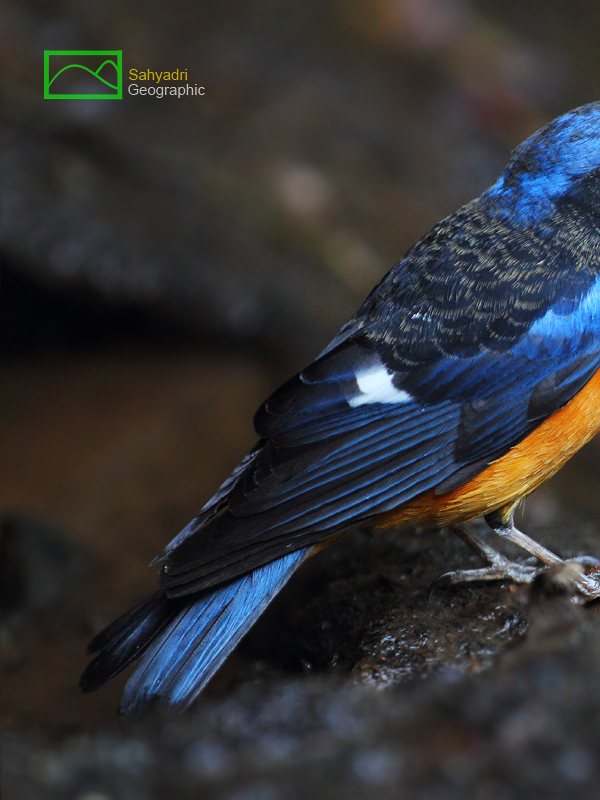 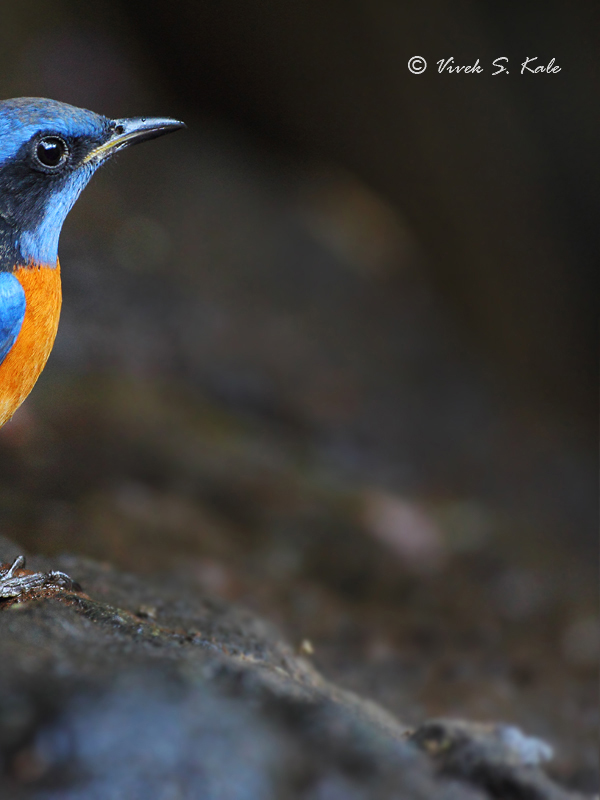  |
| 5. Blue capped rock thrush female, western ghats, Maharashtra, India |
| |
|
|
मे ते सप्टेंबर या उन्हाळयाच्या काळात तो हिमालयाच्या पायथ्याच्या डोंगराळ भागात (१ ते ३ हजार मीटर उंचीवर) विणीसाठी रहातो. त्यांचे घरटे जमिनीवर झाडांखाली, दगडांच्या खपचीत करतात. हिवाळ्यात हा पक्षी शांत असतो, तो फारसा आवाज करत नाही. विणी च्या हंगामात मात्र तो त्याची शीळ वाजवतो.
|
|
These birds nest on the ground in tree root crevice or in the rock crevice. These birds are mainly arboreal. They feed on insects in bark and on branches. They also sometimes forage among leaves in the forest floor.
|
|
|
| |
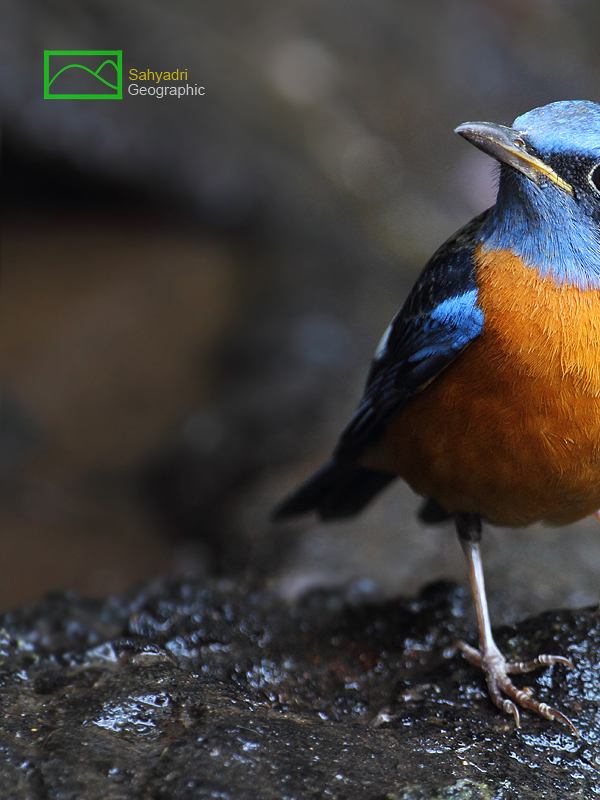 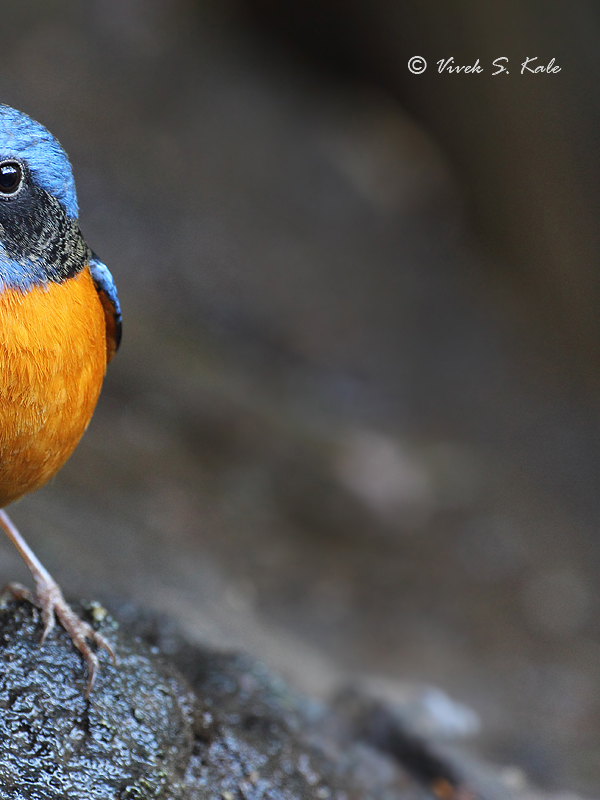  |
| 6. Blue capped rock thrush female, western ghats, Maharashtra, India |
| |
|
|
| |
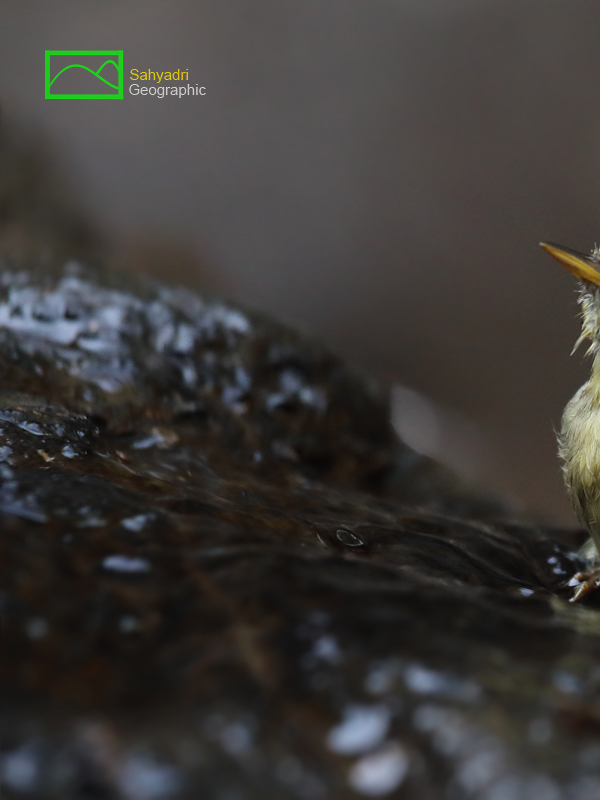 
|
| |
| 7. Sulphur bellied warbler, Maharashtra, Western ghats, India |
| |
|
|
सल्फर बेलिड वार्बलर हा ११ से मी आकाराचा, फिलोस्कोपस कुटुंबातला वार्बलर पक्षी आहे. करड़्या रंगाचा हा पक्षी पोटाकडे पिवळा असतो. उन्हाळ्यात विणीच्या हंगामात सल्फर बेलिड वार्बलर हिमालयात आढळतो. हिवाळ्यात हा पक्षी उत्तर व दक्षिण भारतामध्ये आढळतो. जंगलातल्या जमिनीवर पडलेल्या पानगळीत आणी झाडांच्या बुंध्यांवर तो आपले खाद्य शोधताना दिसतो.
|
|
The sulphur bellied warbler is a small bird from phyloscopus warbler family. It is about 11 cm in size. The bird breeds in summer in Himalaya and in winter it migrates to central and north India. The bird is normally seen searching for the food on forest floor and tree barks and roots.
|
|
|
| |
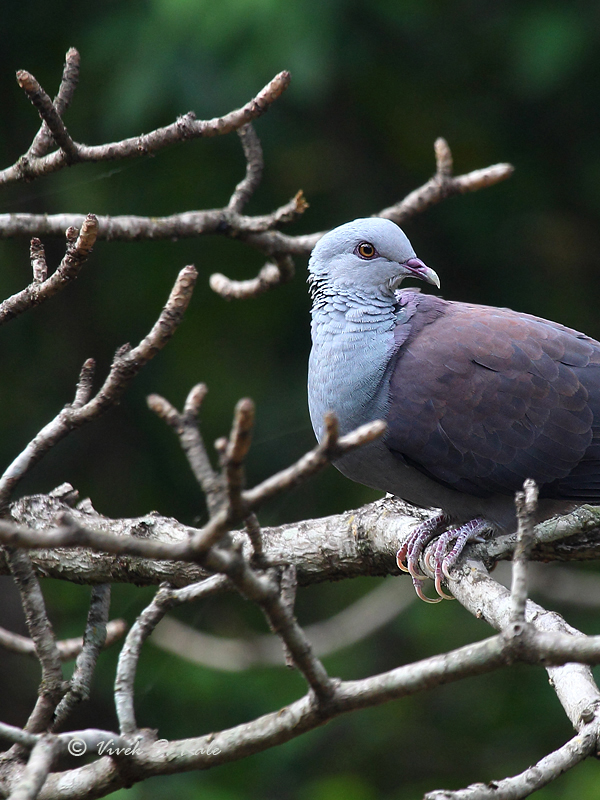 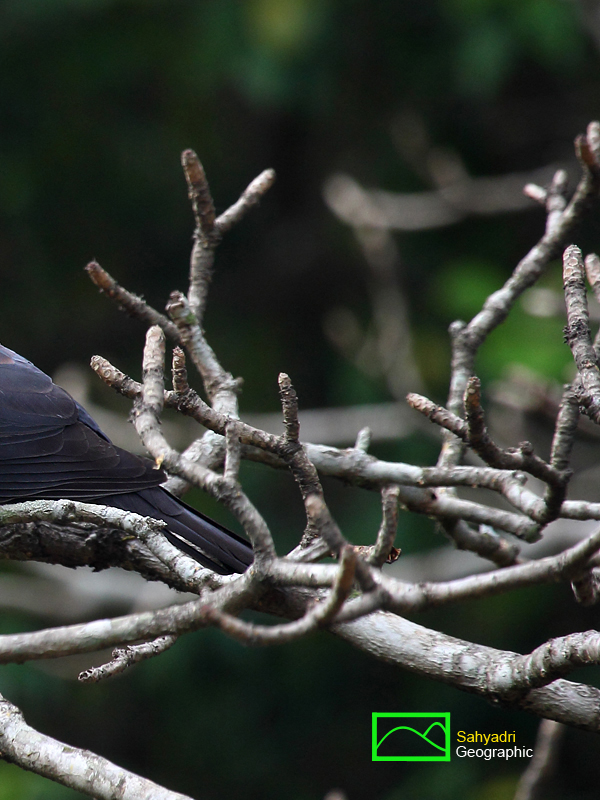
|
| |
| 8. Nilgiri wood piegeon, Maharashtra, Western ghats, India |
| |
|
|
सह्याद्रीच्या सदाहरित जंगलात रहाणारा एक अत्यंत महत्वाचा पक्षी आहे, निलगिरि वूड पिजन. याला मराठीत रानकवडा असे म्हणतात. मोठया आकाराचे हे कबुतर शिकारीमुळे व अधिवास नाहीसा होत असल्यामुळे लुप्त होण्याच्या मार्गावर आहे. उंच झाडांवर आढळणारी ही कबुतरे लाजाळु असतात. उंच झाडांची गच्ची हे त्यांचा अधिवास होय. आय. यु. सी. एन. संस्थेच्या यादीत या पक्ष्याला "थ्रेटंड" असे म्हणले आहे. तो सह्याद्रीतला अंतर्जन्य पक्षी आहे.
.
|
|
One of the important endemic birds of western ghats, Nilgiri wood pigeon is categorized as Threatened bird species as per IUCN list. It is a large sized bird (30 cm). The large trees in evergreen forest and its canopy is its habitat. These birds are good indicators of dense evergreen forest.
.
|
|
|
| |
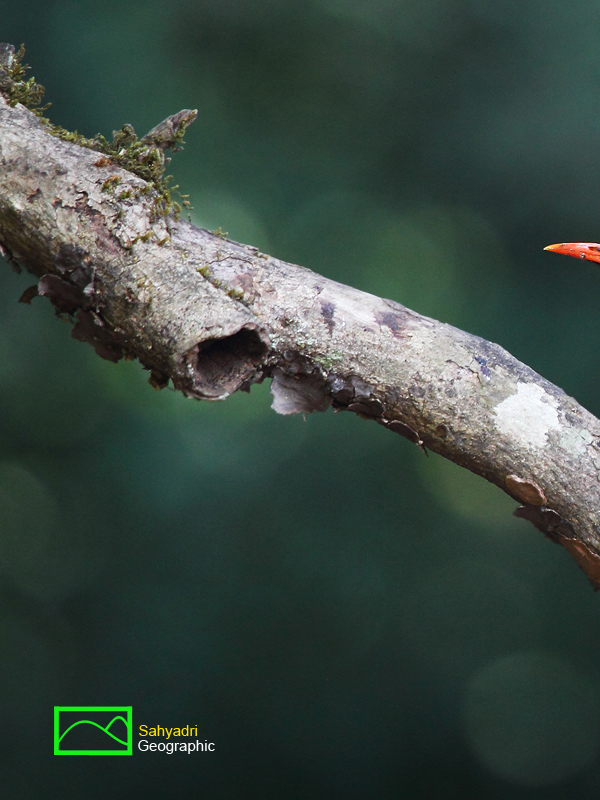 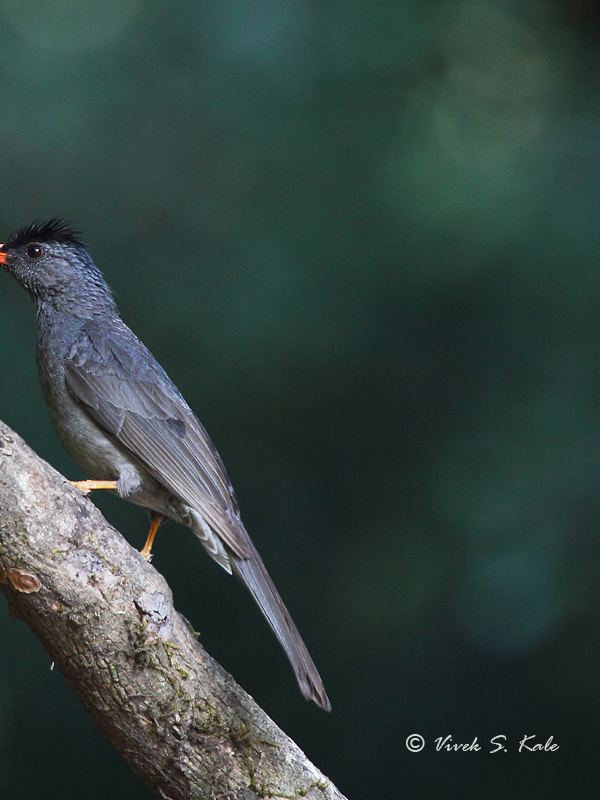
|
| |
| 9. Square tailed bulbul, Maharashtra, Western ghats, India |
| |
|
|
सह्याद्रीच्या सदाहरित जंगलांच्या झाडांच्या माथ्यावर रहाणारा व क्वचितच खाली जमिनीवर येणारा पक्षी आहे, काळा बुलबुल. हे काळे शिडशिडे बुलबुल, जंगलात ग्रुप मध्ये रहातात. त्याच्या डोक्यावरचे पिस उभी असतात.
|
|
The Indian black bulbul is seen in evergreen forest canopies in western ghats. The birds are seen in groups and seldom come down the canopy.
|
|
|
| |
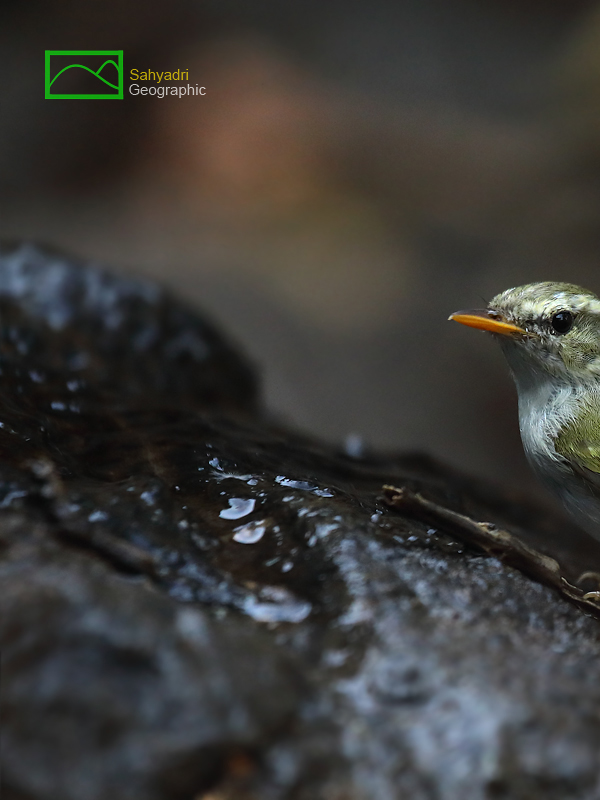 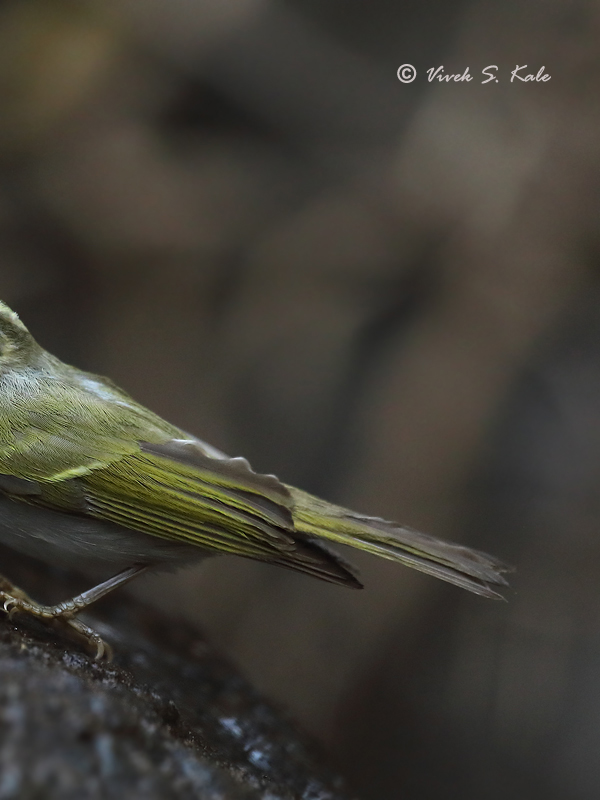
|
| |
| 10. Western crowned warbler, Maharashtra, Western ghats, India |
| |
|
|
वेस्टर्न्ड क्राउन्ड वार्बलर हा ११ से मी आकाराचा, फिलोस्कोपस कुटुंबातला वार्बलर पक्षी आहे. करड़्या रंगाचा हा पक्षी पोटाकडे पिवळा असतो. उन्हाळ्यात विणीच्या हंगामात वेस्टर्न्ड क्राउन्ड वार्बलर हिमालयात आढळतो. हिवाळ्यात हा पक्षी पश्चिम घाटात आढळतो.
|
|
The western crowned warbler is a small bird from phyloscopus warbler family. It is about 11 cm in size. The bird breeds in summer in Himalaya and in winter it migrates to central and north India.
|
|
|
| |
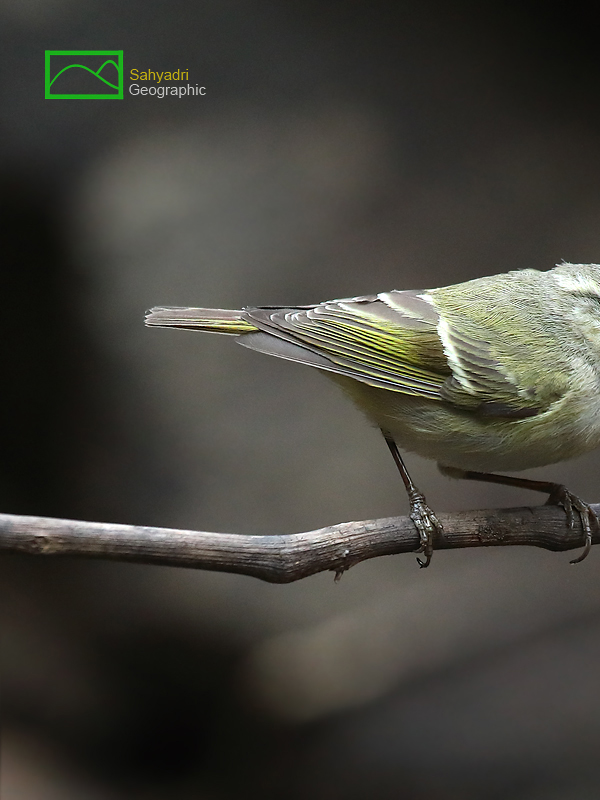 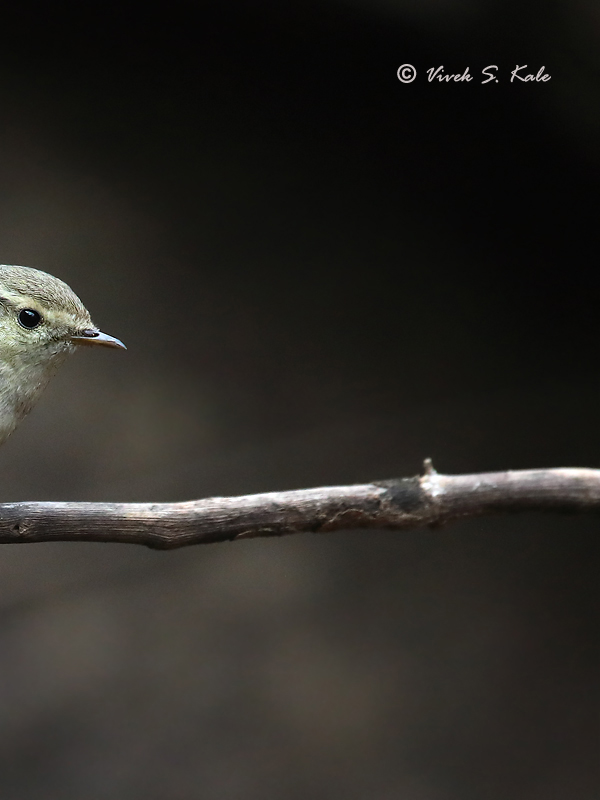
|
| |
| 11. Tytler warbler, Maharashtra, Western ghats, India |
| |
|
|
टायटलर वार्बलर हा ११ से मी आकाराचा, फिलोस्कोपस कुटुंबातला वार्बलर पक्षी आहे. करड़्या रंगाचा हा पक्षी पोटाकडे पिवळा असतो. उन्हाळ्यात विणीच्या हंगामात टायटलर वार्बलर हिमालयात आढळतो. हिवाळ्यात हा पक्षी पश्चिम घाटात आढळतो.
. |
|
Tytler’s warbler is a small bird from phyloscopus warbler family. It is about 11 cm in size. The bird breeds in summer in Himalaya and migrates to western ghats in winter.
|
|
|
| |
 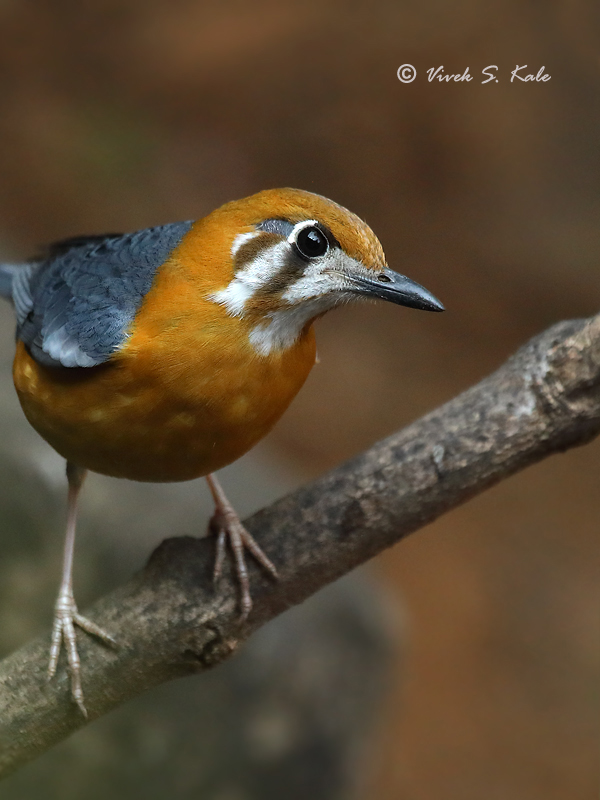
|
| |
| 12. Orange headed ground thrush, evergreen forest, Maharashtra, Western ghats, India |
| |
|
|
श्वेत कंठी नारंगी कस्तुर हा आपल्या देशात बहुतेक सर्वत्र रानात आढळणारा पक्षी आहे. त्याचे पंख निळसर असतात. तर त्याचे डोके व इतर भाग नारंगी रंगाचे असतात. चेहऱ्यावर व चोचीखाली तो सफेद असतो. डोळ्याखाली त्याला दोन काळ्या रेघा असतात. हे पक्षी बुजरे व एकाकी असतात. रानात ते एकटेच फिरताना दिसतात. बहुतेक वेळा हा कस्तुर जंगलातील पालापाचोळ्यात किडे, अळ्या शोधताना दिसतो.
|
|
Orange headed ground thrush is resident bird common in Indian forests. It has uniform grey upperparts, and an orange head and underparts. The female and young birds have olive colored upperparts. The species seen in the image here is Z.C. cynotus. It has white throat and face sides. It has two stripes below the eyes. These birds are shy and secretive. Often this bird is seen alone in the forest. It feeds on insects, worms and fruits. It is often seen in leaf litter.
|
|
|
| |
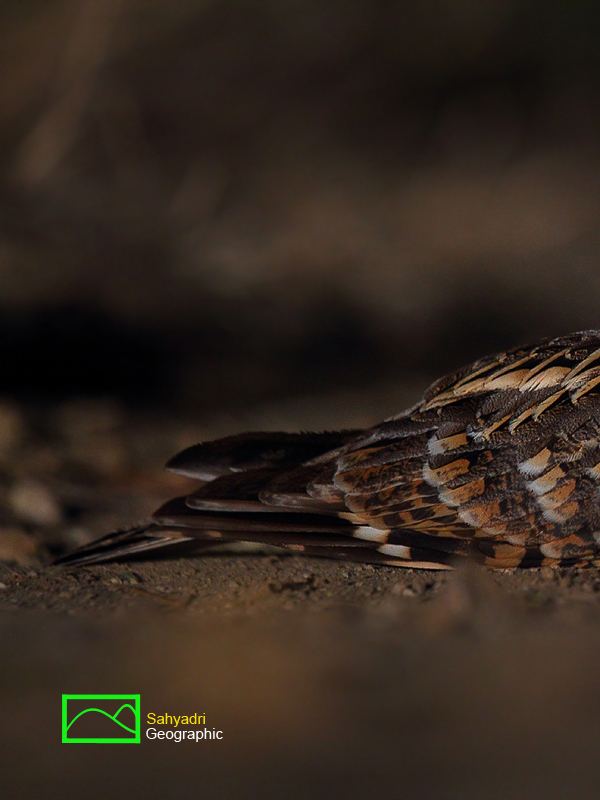 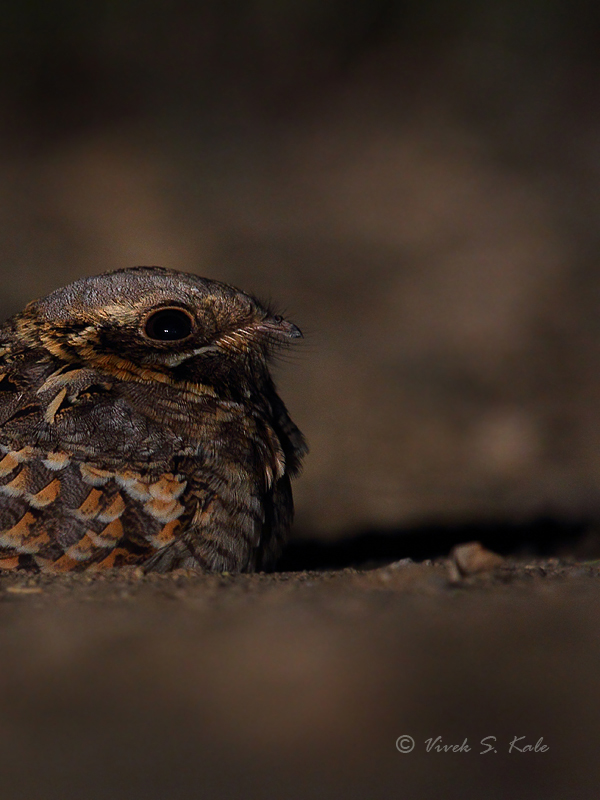
|
| |
| 13. Indian nightjar, open spaces around forest, Maharashtra, Western ghats, India |
| |
|
|
रातवा एक निशाचर पक्षी आहे. रात्री हा पक्षी सक्रिय असतो. रातवा दिवसा आराम करतो. रातवा छोटे पतंग, किडे खातो. त्याच्या अंगावर ठिपके व रेघांचे अदभुत डिझाइन असते. त्यामुळे तो जमिनिवर बसलेला असताना किंवा झाडावर बसला असताना पटकन ओळखु येत नाही. त्याचे रंगरुप झाडाच्या सालीत व पालापाचोळ्यात लपते. यामुळे या पक्ष्यांना, दिवसा आराम करणे सोपे होते. रात्री हे पक्षी बऱ्याचदा जमिनीवर बसलेले दिसतात. आपल्या पृथ्वीवर रातव्यांच्या ८० जाती आहेत. त्यांचे रहाणीमान एक्सारखे असले तरी, रंगरुप, आकार, अधिवास यात फरक आहे. भारतात ९ जातीचे रातवे आढळतात. त्यात प्रामुख्याने भारतीय रातवा, करडा जंगल रातवा, सव्हाना रातवा, जेर्डॉन रातवा, इजिप्शियन रातवा, युरेशियन रातवा, मोठया कानांचा रातवा, साइक्स रातवा, मोठया शेपटाचा रातवा असे प्रकार आहेत. या ९ जातींपैकी ५ जातींचे रातवे सह्याद्री परिसरात आढळतात. (भारतीय रातवा, जंगल करडा रातवा, जेर्डॉन रातवा, सव्हाना रातवा व मोठया कानांचा रातवा). यातले कोणतेच रातवे जरी सह्याद्रीचे अंतर्जन्य नसले तरी त्यांचा पर्यावरणाच्या सृष्टीशृंखलेत महत्वाचे स्थान आहे. भारतीय रातवा आकारने लहान असतो, त्याच्या पखांवर तपकिरी ठिपके असतात. मोकळ्या माळावर व डोंगरांच्या पायथ्याला तो आढळतो. रातव्याच्या रात्री च्या संचारामुळे घुबडांसारख्याच त्यांच्या बाबतीत बऱ्याच गैरसमजुती व अंधश्रद्धा आहेत.
|
|
Nightjars are the nocturnal birds. They are active in the night and take rest in the day time. These birds feed on moths and insects in the night or during early morning. They are very well camouflaged. The camouflage is like dried leaves or tree bark. This helps these birds to remain undetected during the day time when these birds take rest. These birds are seen roosting on the rocks or on the ground during night. There are about 80 species of nightjars on our planet. They vary in their shape, size, plumage and habitat. There are nine species of nightjars seen in India. These include, Indian nightjar, Large-tailed nightjar, Grey nightjar, Syke’s nightjar, Savana nightjar, Jerdon’s nightjar, Great eared nightjar, Eurasian nightjar, Egyptian nightjar. Out of these nine species, about 5 species, namely Indian nightjar, Savana nightjar, Grey nightjar, Jerdon’s nightjar, Great eared nightjar are seen in western ghats. Though none of these birds are endemic, they play a vital nocturnal role in the forest clearings and open country habitats in western ghats. Indian nightjar (Caprimulgus asiaticus) is a widespread resident nightjar, It is a small but brightly streaked and dotted with brown patterns. It is seen in open country and at the foothills. Nightjars are often heard in the night than they are seen. Due to nocturnal nature of these birds many superstitions are associated with the bird all across the world.
|
|
|
| |
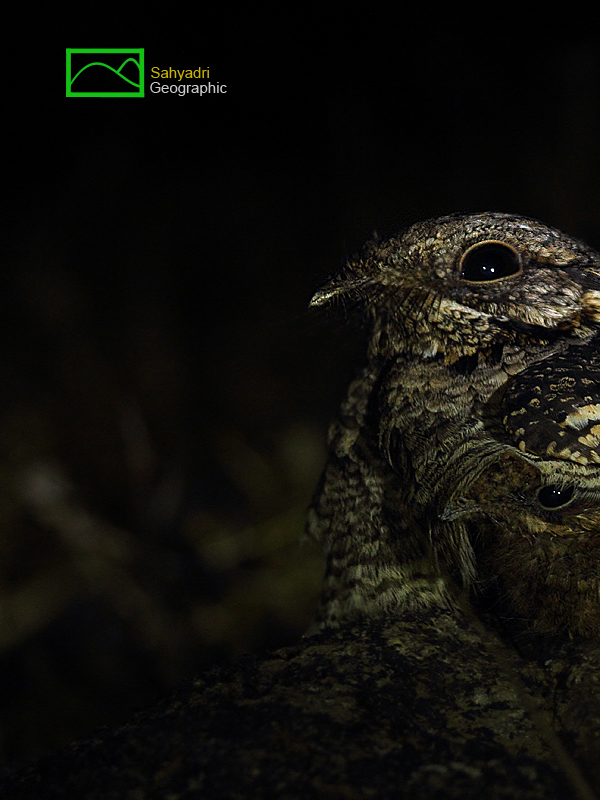 
|
| |
| 14. Indian nightjar, open spaces around forest, Maharashtra, Western ghats, India |
| |
|
|
करडा जंगल रातवा आकारने मोठा असतो. त्याच्या करड़्या रंगरुपावर काळे, तपकिरी ठिपके असतात. कापु कापु कापु असे तो ओरडतो. शहरातल्या झगमटामुळे रातव्यांना अंधारकडे पळ काढावा लागला आहे. हे पक्षी जमिनिवरच अंडी टाकतात.
|
|
Grey nightjar or Indian jungle nightjar (Caprimulgus indicus) is widespread resident bird. It is grey in color with light brown and heavy black markings. Its song is loud with Chuk-chuk-chuk-chuk call. It is about 28 to 32 cm in size. These birds do not build the nest. They lay the eggs on the ground.
|
|
|
| |
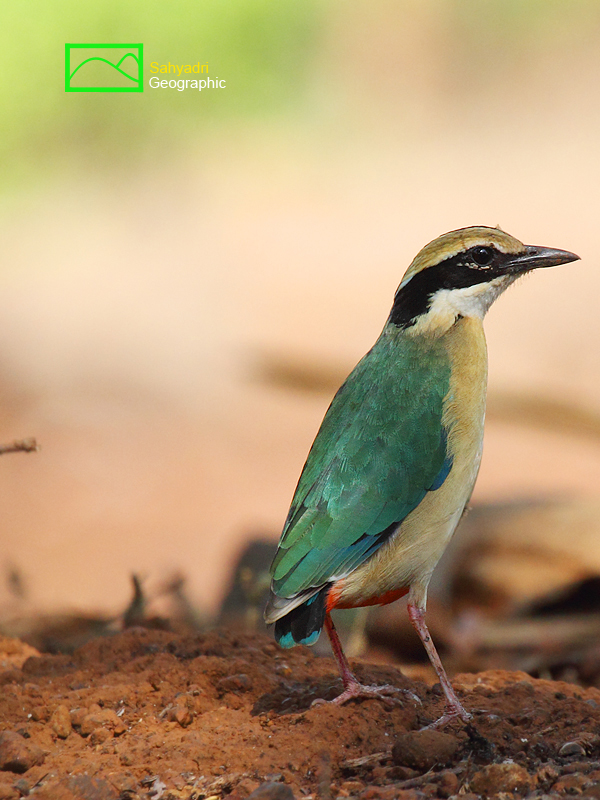 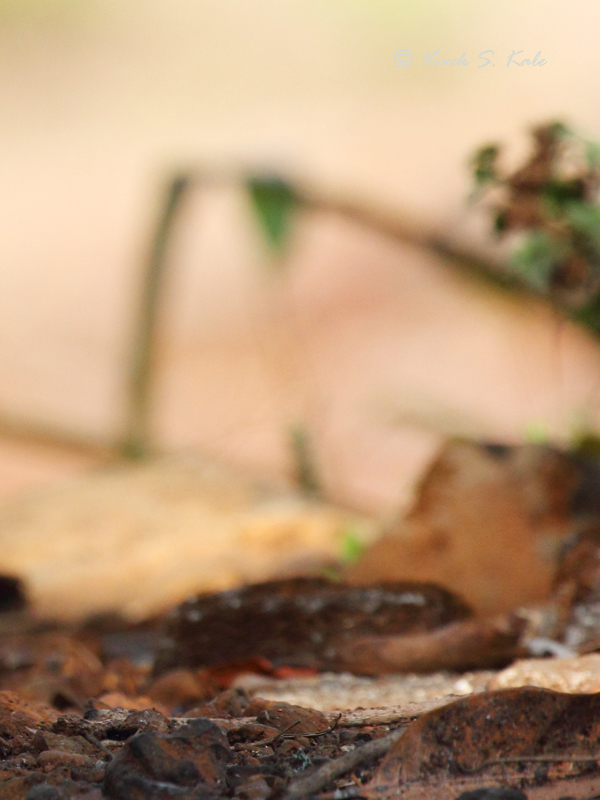
|
| |
| 15. Indian pitta, evergreen forest in Konkan region, Maharashtra, Western ghats, India |
| |
|
|
इंडियन पिट्टा किंवा नवरंग हा पक्षी उन्हाळ्यात व पावसाळ्यात सह्याद्रीच्या तळास कोकणात आढळतो. त्याचा आकार १९ से मी असतो.
|
|
Indian pitta is seen in broad leaved forest. It is 19 cm in size. The bird breeds in Himalaya and north east India and winters in South India, Konkan and Srilanka. The bird is seen at the base of western ghats, Konkan in Maharashtra.
|
|
|
| |
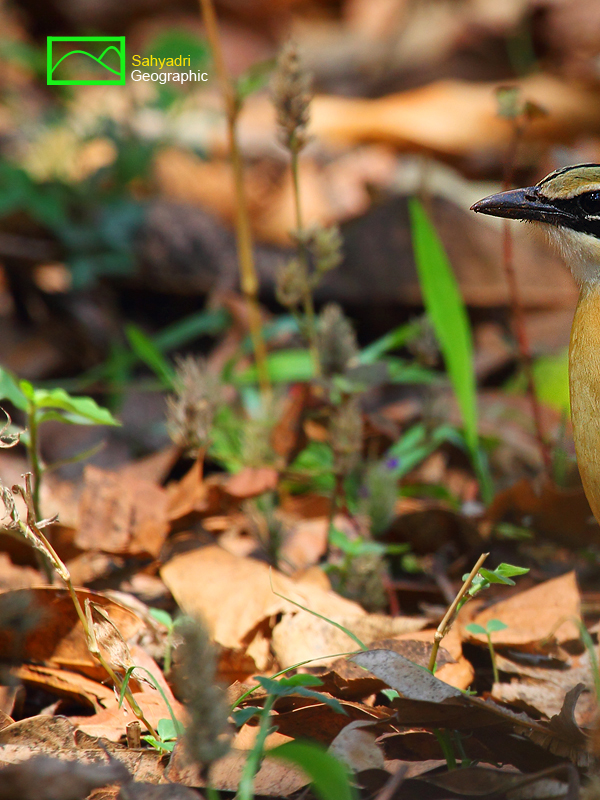 
|
| |
| 16. Indian pitta, evergreen forest in Konkan region, Maharashtra, Western ghats, India |
| |
|
|
| |
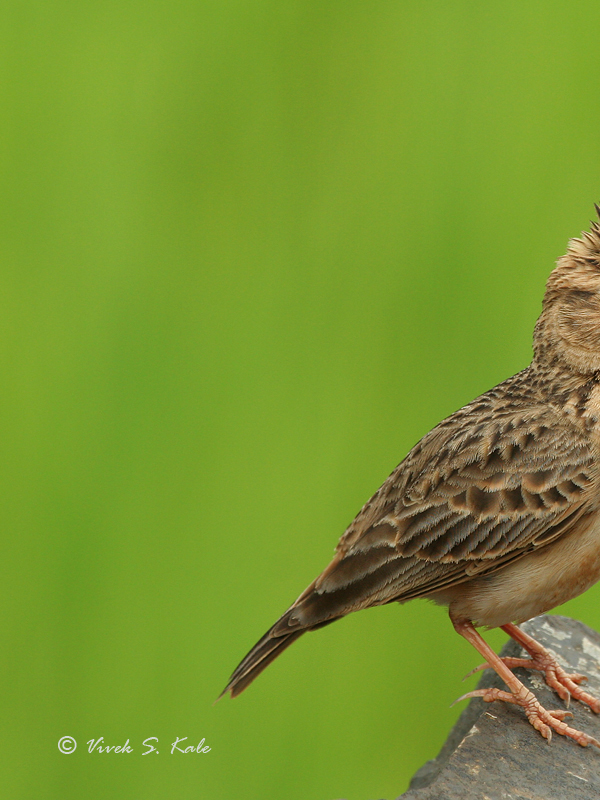 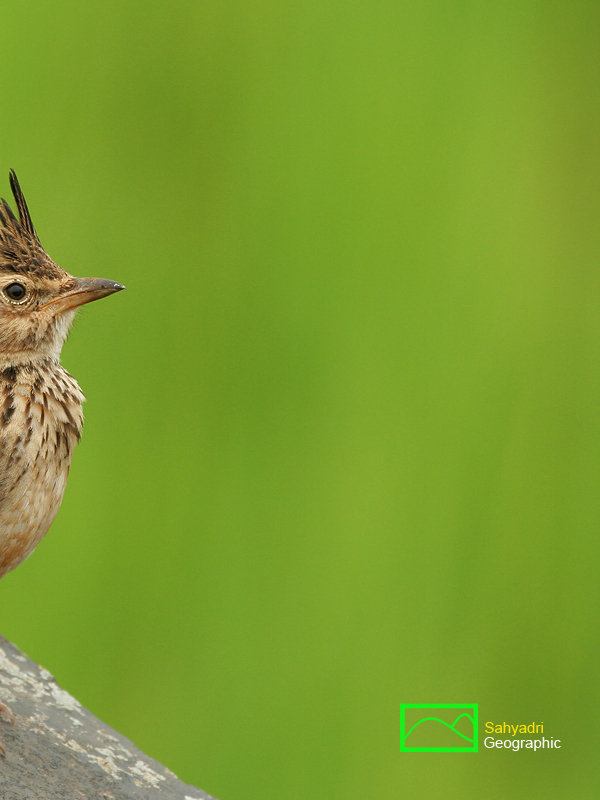
|
| |
| 17. Malabar lark, hill slope grasslands within the evergreen forest, Maharashtra, Western ghats, India |
| |
|
|
तुरेवाला चंडोल पश्चिम भारतात डोंगराळ भागात आढळतो. रंगाने फिकट तपकिरी रंगाचा हा पक्षी पावसाळ्याच्या उत्तरार्धात घरटे बनवतो. जमिनीवरच बनवलेल्या या घरट्यात २-३ अंडी घालतो.
|
|
The Malabar crested lark is a bird seen in hilly region of western India. As the name suggests, it has a crest on its head. It feeds on seeds and insects. It breeds in the post monsoon season and build its nest on the ground.
|
|
|
| |
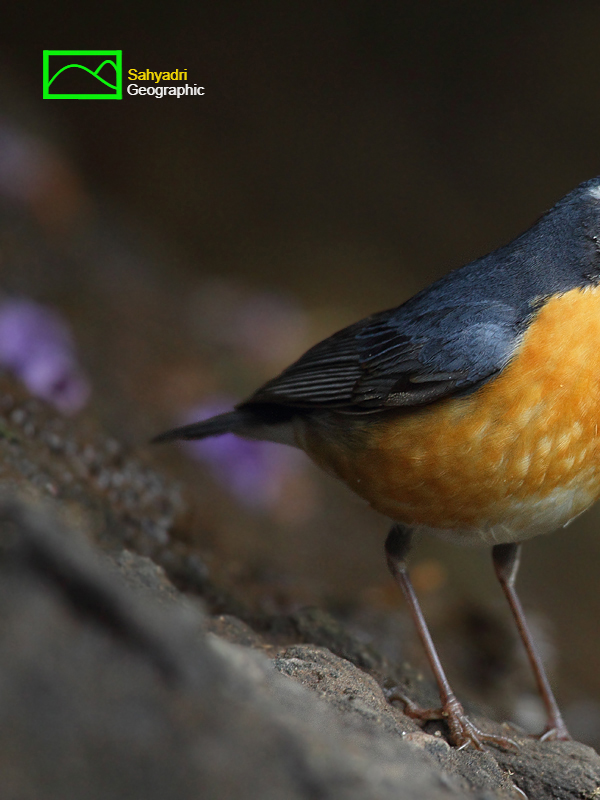 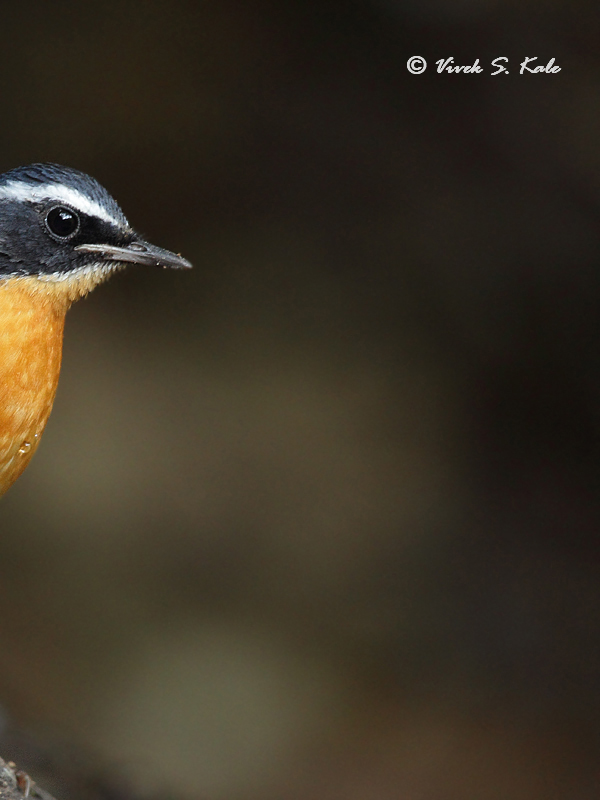
|
| |
| 18. Indian blue robin male, evergreen forest, Maharashtra, Western ghats, India |
| |
|
|
इंडियन ब्लु रॉबिन हा एक लहान चिमणी पेक्षा थोडा मोठा पक्षी आहे. हा पक्षी हिमालयात व ब्रह्मदेश, चीन मध्ये विणीच्या हंगामात आढळतो. जंगलात जमिनीवर झाडांखालच्या पानगळीत हा पक्षी रहातो. पाठीकडे निळा तर पोटाकडे केशरी रंगाचा हा पक्षी दिसायला अत्यंत सुंदर दिसतो. मराठीत याला सर्वमान्य नाव नसले तरी आपण याला निळा चीरक असे म्हणु शकतो. निळा चीरक आकाराने १३ ते १५ से.मी. लांब असतो. नर व मादी पक्षी रंगरुपाने वेगवेगळे दिसतात. याला इंग्रजीत सेक्शुअल डायमोर्फिजम असे म्हणतात. नर पक्षी रंगरुपाने अत्यंत सुंदर असतो. नर पाठीकडे काळपट निळा असतो. तर छाती कडे तो केशरी रंगाचा असतो. त्याच्या डोळ्यावर सफेद आडवी भुवईसारखी लांब व रुंद पट्टी असते. इतरत्र डोळ्याच्या आजुबाजुसचा रंग काळपट निळा असतो. शेपटाखालचा भाग सफेद असतो. हनवटीला व काळ्या गालांखाली लहान सफेद लकेर असते. त्याचे पाय पांढरट गुलाबी असतात. मादी पक्ष्याचा रंग हिरवट करडा भुरा असतो. पोटाकडे तीचा रंग सफेद असतो. पक्ष्याची पिल्ले एक दिड वर्षांपर्यंत मादी सारखी दिसतात. त्यांचे रंग जास्त गडद असतात.
|
|
Scientific name of Indian blue robin is Luscinia brunnea. The bird is also known as Indian blue chat. This is a small Himalayan bird from thrush family (Turdidae). It has blue and orange plumage. It is slightly larger than the common house sparrow. The bird seems to have no name in Marathi. The bird is about 13 to 15 cm in size (length from its beak to tail). The sexual dimorphism can be seen in this bird species. Sexual dimorphism is the difference in appearance between males and females of the same species, such as in colour, shape, size, and structure.The male bird has blue upperparts. The underbody of male bird is orange rufous. The bird has long broad white supercilium. The lore of the male bird is bluish black. The eye strip is blusih black which coverts ear coverts up to neck. Point of chin and narrow line under the black cheeks is white. The under tail and lower belly are white. The legs and feet are pale pinkish white. Iris of the eyes is dark brown.
|
|
|
| |
 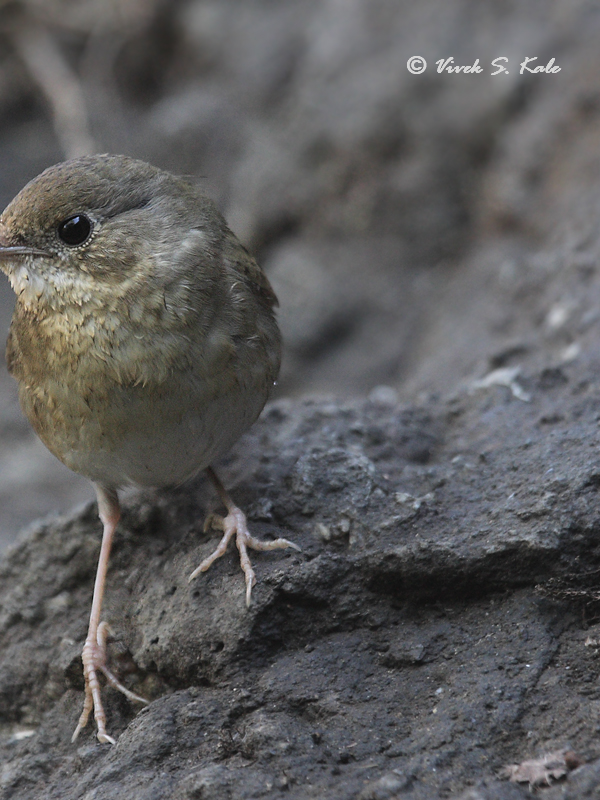
|
| |
| 19. Indian blue robin female,evergreen forest, Maharashtra, Western ghats, India |
| |
|
|
निळ्या चीरकाच्या दोन उपजाती आहेत. लुसिनिया ब्रुनिआ ब्रुनिआ आणी लुसिनिया ब्रुनिआ वीकहॅमी अशी त्यांची नावे आहेत. यातील लुसिनिया ब्रुनिआ ब्रुनिआ उपजातीचे पक्षी उन्हाळ्यात विणीसाठी उत्तर अफगाणीस्तान पासुन पुर्वोत्तर भारतातील हिमालयात, मध्य चीन मध्ये आढळतात. हिवाळ्यात लुसिनिया ब्रुनिआ ब्रुनिआ उपजातीचे पक्षी भारत व श्रीलंका च्या जंगलात आढळतात. लुसिनिया ब्रुनिआ वीकहॅमी उपजातीचे पक्षी मात्र स्थलांतर करत नाहीत. हे पक्षी मणिपुर व ब्रह्मदेशाच्या चीन प्रांतातील डोंगररांगामंध्ये आढळतात.
|
|
The adult female is olive-brown with whitish under-parts except for the Rufus breast. The young male is like the female but has the back darker and much suffused with blue.There are two subspecies of Indian blue robin, Luscinia brunnea. The two subspecies are Larvivora brunnea brunnea and Larvivora brunnea wickhami. Out of these 2 subspecies, Larvivora brunnea brunnea is prominently recorded in India. Larvivora brunnea brunnea breeds in north east Afghanistan east through Himalaya to north eastern India and central china. The bird migrates in winter to India and Srilanka. The other subspecies Larvivora brunnea wickhami is recorded in Chin hills of Myanmar and is not migratory.
|
|
|
| |
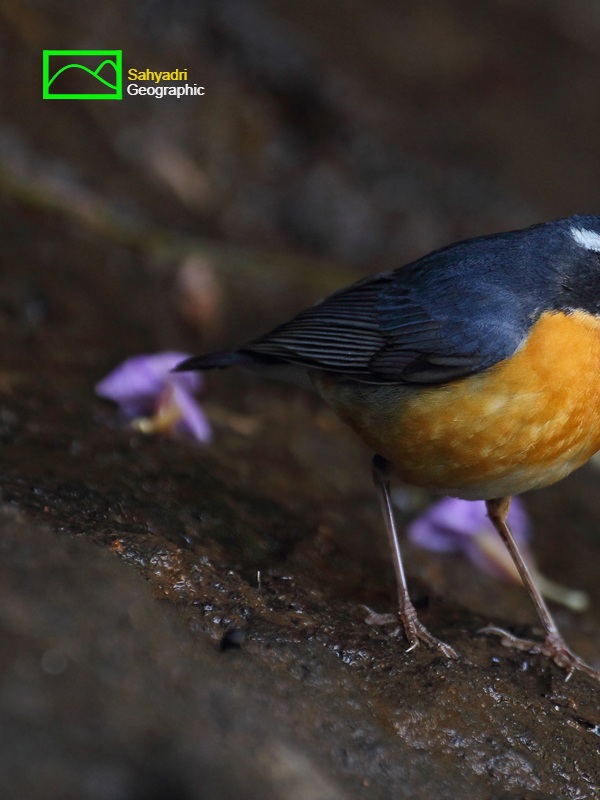 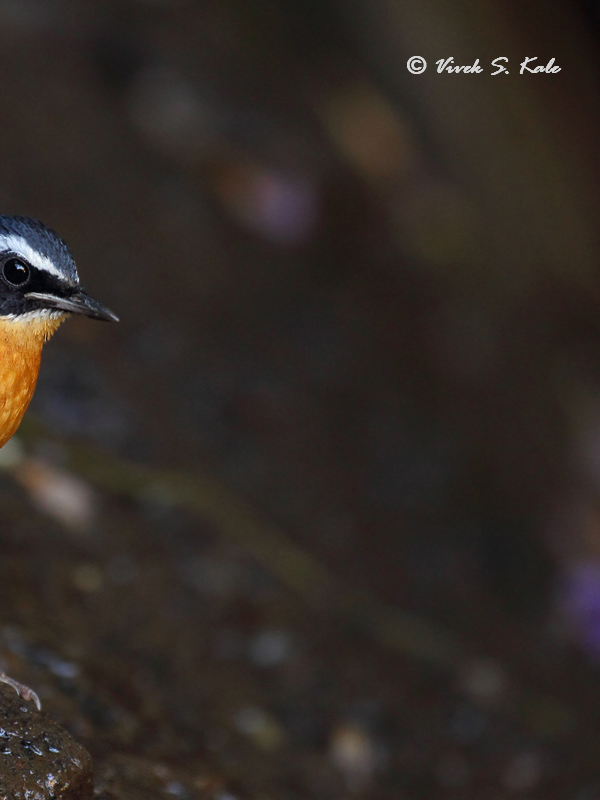
|
| |
| 20. Indian blue robin male,evergreen forest, Maharashtra, Western ghats, India |
| |
|
|
निळा चीरक किडे खातो. घनदाट जंगलात जमिनीवर पडलेल्या पालापाचोळ्यात हा पक्षी चालता चालता किडे पकडताना दिसतो. झाडांवर तो क्वचित जातो. असे चरताना तो क्वचित प्रसंगी उड़्या मारतो. शेपटाच्या पिसांचा फुलोरा करुन त्या हालचाली करतो. जमिनीवर पडलेली पाने उलटवुन तो त्या खालच्या किड़्यांना शोधतो. झऱ्यांच्या आजुबाजुस पाणथळ भागात तो हमखास आढळतो. मे ते जुलै या काळात तो हिमालयात व चीनमध्ये विणीसाठी जातो. तेथे तो जमिनीवर आपले घरटे बनवतो. हिवाळ्यात सह्याद्री, श्रीलंका, पुर्व घाटात जंगलात आढळतो. त्याची शीळ तो सुरवातीस संथ हळुहळु वाजवतो तर शेवटाला तो शीळ वाजवण्याची गती वाढवतो.
|
|
The Indian blue robin is insectivorous bird. These birds are found in dense evergreen forest undergrowth. It feeds mainly on the ground. It moves around in undergrowth in forested region.It uses its tail fanning for these small hops and manoeuvres on the ground. It turns the leaves on the forest floor to search the insects, particularly around the moist streams and under the trees with fruits fallen on the ground. It breeds from May to July in Himalaya. It nests on the ground. The female is believed to incubate but both sexes take part Indian blue robin sings and calla in their winter grounds. The song consists of sudden and sharp series of whistles ending in a rapid series of notes. They also utter a sharp and low clicking alarm note.
|
|
|
| |
|













































